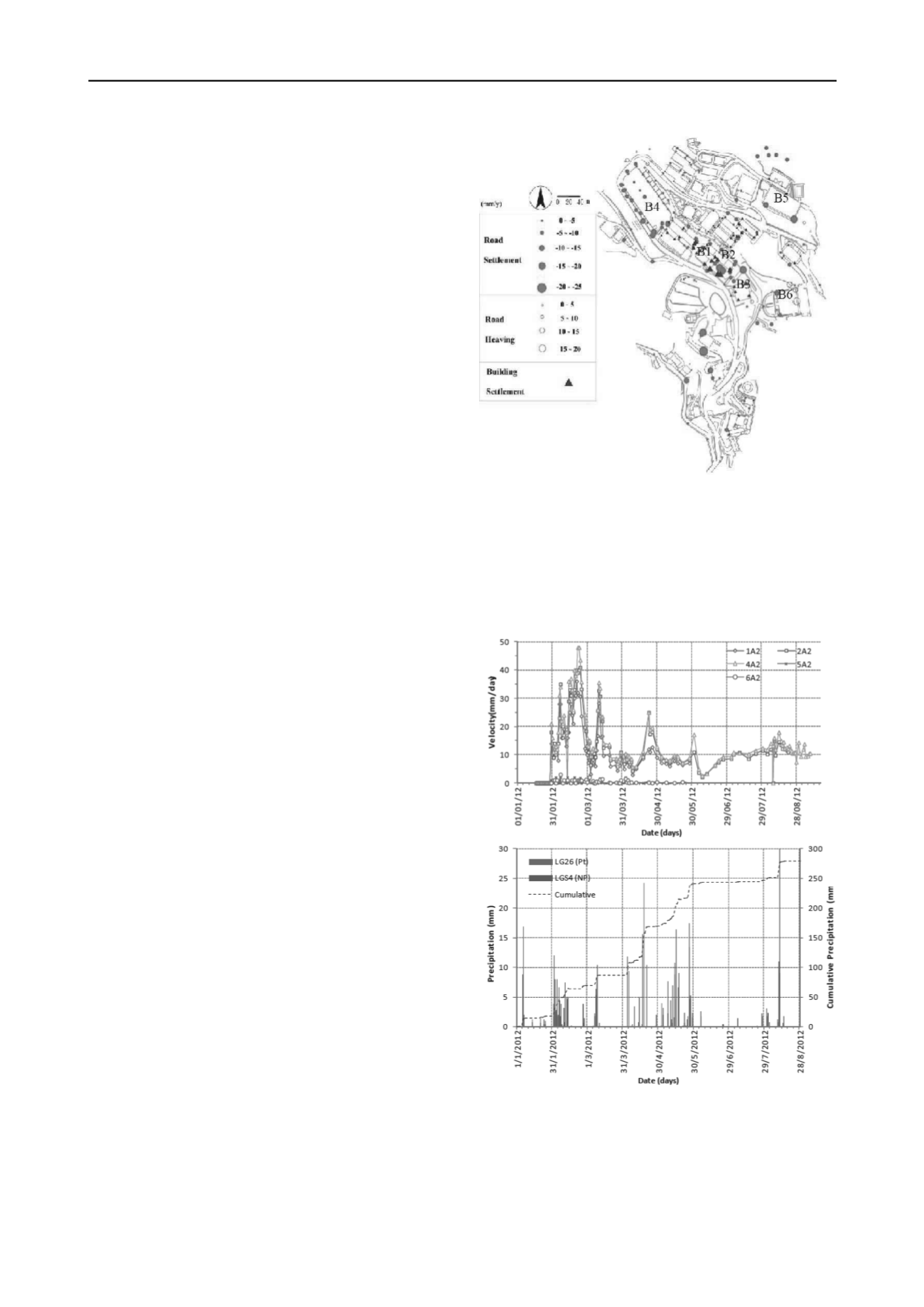
2139
Technical Committee 208 /
Comité technique 208
the deformation, and is independent of the rainfall period. Some
interesting observations are made regarding the influence of the
soil water characteristic curve (SWCC) on the deformation
behavior of an unsaturated slope undergoing infiltration – in
particular, that a temporary reduction in deformation rate may
not be indicative of increased stabilization, but rather an effect
of the reduced rate of change of suction loss with infiltration.
The finding is an excellent illustration of the potential for the
state-of-the-art to influence the state-of-the-practice.
Nakata et al.
examines the influence of pore pressure cycles
on the collapse behavior of a slope in a study combining
element testing of a standard sand with field monitoring of a
natural slope. Plane strain compression tests carried out on
Toyoura sand showed that cycles of pore pressure always led to
soil hardening rather than increasing the likelihood of failure. In
the field, it was found that the slope’s behavior was a function
of both the recent and antecedent rainfall, yielding a
recommendation to monitor the groundwater level as well as the
use of rainfall data to understand the fundamentals of collapse
behavior.
Rahhal et al.
presents a study on two landslides that occurred
in Lebanon for which geotechnical parameters were obtained
via laboratory testing. Slope stability analysis of one slide
showed that a loss of cohesion in the clay, at the interface of the
clay and underlying stiffer material, due to seasonal moisture
infiltration, resulted in the instabilities that were reported. For
the second study area, weakening and loss of cohesion in clay
schist due to prolonged water contact was thought to be largely
responsible for the instabilities recorded, with a minor
contribution from cracks that were opened allowing water
infiltration.
Jeng et al.
present a study on the effects of heavy rainfall on
a slope in northeastern Taiwan that is covered with a 10-20m
depth of colluvium and instrumented with a surface monitoring
system. The results from 295 locations of settlement and
displacement monitoring locations are evaluated, together with
the significance of rainfall on initiating ground movements.
Figure 3 shows annual surface settlements of up to 20mm in the
study area. From the analysis of the influence of typhoon
rainfall on the ground displacements in different parts of the
site, a threshold value curve of risk for rainfall was proposed for
the area and a slope stabilization programme subsequently
recommended by the authors. Once again, a careful series of
field observations serve to influence the state-of-the-practice.
Kavvadas et al
. presents the management of a mine site in
Greece in which significant ground displacements are seen to
occur with rainfall. Figure 4 shows a generally good correlation
between surface velocities as determined at monitoring prisms
(top) and rainfall records taken approximately 6km away
(bottom). The data indicates a stick – slip mechanism and a
regressive movement in which the velocity does not increase or
decrease at a constant rate but undergoes abrupt changes. The
authors posit that, during and after heavy precipitation, the
water-filled tension cracks provide an increasing driving force.
As displacement continues, the width of the cracks increases
and the water level drops with a resulting dissipation of water
pressure. This is a different mechanism to that of tertiary creep
in which an increase in velocity of slope movement may be the
precursor to imminent failure (Rose and Hungr, 2007).
Figure 3. Jeng et al. Annual surface settlement distribution
Kavvadas et al
. highlights the importance of understanding
the underlying mechanism of slope deformation and, in doing
so, shows that high mine slopes can operate under large rates of
displacement, as long as the type of sliding mechanism is
identified and continuously monitored. Finally, the paper shows
that remedial measures can be incorporated in a mine plan in
order to reduce movements, if not to arrest them entirely.
Figure 4. Kavvadas et al. Correspondence of slope velocity change with
precipitation.
Coutinho and da Silva
present a paper on the
characterization, analysis and stabilization of a landslide located
in a township in Brazil. The soil formation is characterised as
sandy clay to silty sand (Barreiras formation) and residual
granitic soil. The landslide was analysed as a two-part process
during a precipitation event (Figure 5). The analysis suggested
that the upper part of the slide zone failed first, due to a lower


